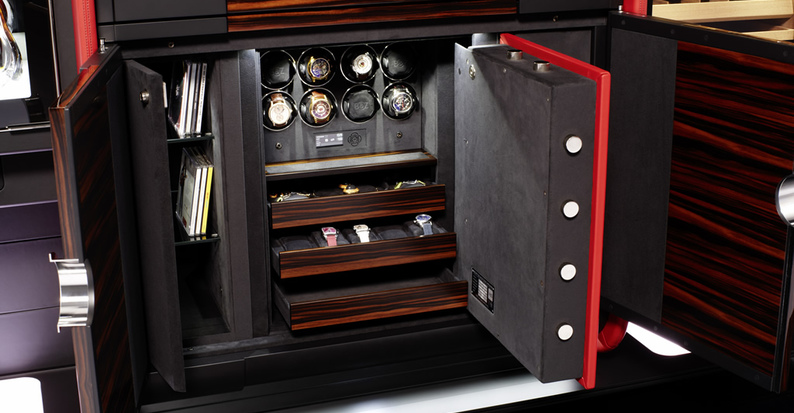
Safes are designed to be difficult to move (otherwise they wouldn't accomplish their original purpose.) The problem is when you, the owner, have to move this heavy metal container from one place to another. In this case, we always recommend to hire professional assistance, the same as we always advice to do with other heavy items such as pool tables and pianos.
But if for some reason you can not hire expert movers, you should consider these tips to move your safe correctly and safely.
1. Getting to know your safe
Check some of the principal specifications of your safe, such as precise weight and dimensions, so you can choose the right moving equipment and tools.
2. Find helpers
Don't underestimate the weight of your safe, they are usually heavier than you might think. So it would be necessary to find at least 3 strong people to move a large safe.
3. Get the right equipment and tools
You are going to need at least a heavy-duty hand truck or a heavy-duty appliance dolly to undertake the project, but there are also a number of specialized moving equipment such as electric stair-climbing equipment, pallet jacks, steel rollers, aluminum plates and heavy-duty hand trucks to complete the task safer and faster.
Those are the tools and equipment that professional movers use on a daily basis.
4. Plan the moving operation
Make a plan and go over the whole process; that includes walking the path that you are going to follow when moving the safe.
This is a necessary step in order to check if there are obstacles of any kind such as architectural barriers like tight corners, stairs, narrow corridors and doors, etc.
Acknowledging all the possible obstacles and the risks involved, will help you to re-evaluate the situation and take the decision of whether or not you can undertake the challenge by yourself or hire professional assistance.
If you’re moving the safe to a new home, you definitely need a rental moving vehicle or a pick up equipped with a loading platform to facilitate the operation.
5. Clear the path
Move out of the way all the items that will interfere with the moving process.
Along the path, place protective coverings such as film protectors, old carpets or blankets, or just large pieces of cardboard to avoid damages on the floors and carpets.
Tape pieces of cardboard or thick blankets on any place that might get into contact with the safe while wheeling it.
6. Wear appropriate clothing
- In order to have a better grip and protect your hands and fingers, wear a high quality pair of work gloves.
- Avoid baggy clothes and long jewelry pieces, because they can get caught on something and interrupt the operation.
7. Moving the safe...
- Remove the objects inside of the safe temporarily. Your stored valuables may get damaged during the bumpy ride to the moving truck.
- To avoid accidental opening while being transported, close the door of your safe and lock it in place.
- Wrap a thick moving blanket around the safe until no metal part is visible; then tape it securely with packing tape, rope or straps.
- Tilt the safe carefully to one side and slide the heavy-duty dolly underneath it.
- To keep the safe in place, wrap it with straps as tightly as possible, and then fasten it to the dolly, so it stays perfectly attached to it.
- When the safe is resting upon the dolly, tilt back the dolly so that the heavy weight is distributed uniformly onto the rubber wheels.
How to move a safe upstairs or downstairs?
- Perform the entire operation very slowly and smoothly. Avoid sudden or rushed movements.
- When moving a safe upstairs, one person should guide the safe while the other helpers lift up the dolly one step at a time.
- When moving a safe downstairs, at least 3 people should guide and ease the wheels of the dolly step by step.
- Once the safe is in front of the moving truck, use the loading ramp to wheel up the dolly or use a motor-driven ramp to lift the loaded dolly.
- Place the safe against one of the vehicle sides and strap it securely with several straps and ropes to maintain it immobilized.
- Repeat (in reverse) these instructions, when moving the safe inside of your new home.
When moving a safe the most important issue is protecting the safety of all the people involved in the operation. So if you are not completely sure that you are up to the challenge, turn to qualified professionals.
We know what it takes to move a large safe. Contact us and we will do the heavy lifting for you. No pun intended...
